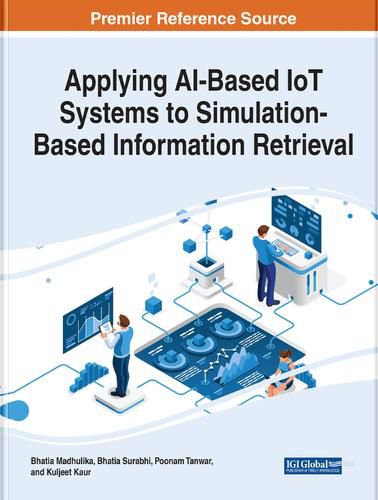Readings Newsletter
Become a Readings Member to make your shopping experience even easier.
Sign in or sign up for free!
You’re not far away from qualifying for FREE standard shipping within Australia
You’ve qualified for FREE standard shipping within Australia
The cart is loading…






This title is printed to order. This book may have been self-published. If so, we cannot guarantee the quality of the content. In the main most books will have gone through the editing process however some may not. We therefore suggest that you be aware of this before ordering this book. If in doubt check either the author or publisher’s details as we are unable to accept any returns unless they are faulty. Please contact us if you have any questions.
Communication based on the internet of things (IoT) generates huge amounts of data from sensors over time, which opens a wide range of applications and areas for researchers. The application of analytics, machine learning, and deep learning techniques over such a large volume of data is a very challenging task. Therefore, it is essential to find patterns, retrieve novel insights, and predict future behavior using this large amount of sensory data. Artificial intelligence (AI) has an important role in facilitating analytics and learning in the IoT devices.
Applying AI-Based IoT Systems to Simulation-Based Information Retrieval provides relevant frameworks and the latest empirical research findings in the area. It is ideal for professionals who wish to improve their understanding of the strategic role of trust at different levels of the information and knowledge society and trust at the levels of the global economy, networks and organizations, teams and work groups, information systems, and individuals as actors in the networked environments. Covering topics such as blockchain visualization, computer-aided drug discovery, and health monitoring, this premier reference source is an excellent resource for business leaders and executives, IT managers, security professionals, data scientists, students and faculty of higher education, librarians, hospital administrators, researchers, and academicians.
$9.00 standard shipping within Australia
FREE standard shipping within Australia for orders over $100.00
Express & International shipping calculated at checkout
This title is printed to order. This book may have been self-published. If so, we cannot guarantee the quality of the content. In the main most books will have gone through the editing process however some may not. We therefore suggest that you be aware of this before ordering this book. If in doubt check either the author or publisher’s details as we are unable to accept any returns unless they are faulty. Please contact us if you have any questions.
Communication based on the internet of things (IoT) generates huge amounts of data from sensors over time, which opens a wide range of applications and areas for researchers. The application of analytics, machine learning, and deep learning techniques over such a large volume of data is a very challenging task. Therefore, it is essential to find patterns, retrieve novel insights, and predict future behavior using this large amount of sensory data. Artificial intelligence (AI) has an important role in facilitating analytics and learning in the IoT devices.
Applying AI-Based IoT Systems to Simulation-Based Information Retrieval provides relevant frameworks and the latest empirical research findings in the area. It is ideal for professionals who wish to improve their understanding of the strategic role of trust at different levels of the information and knowledge society and trust at the levels of the global economy, networks and organizations, teams and work groups, information systems, and individuals as actors in the networked environments. Covering topics such as blockchain visualization, computer-aided drug discovery, and health monitoring, this premier reference source is an excellent resource for business leaders and executives, IT managers, security professionals, data scientists, students and faculty of higher education, librarians, hospital administrators, researchers, and academicians.